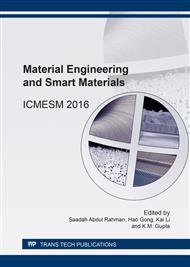p.52
p.56
p.61
p.69
p.73
p.79
p.85
p.89
p.94
Study by Numerical Simulation of the Deep Drawing Parameters-Material during the Wheelbarrow Forming
Abstract:
The object of this study is to highlight one the most encountered problems in the sheet metal forming. Cases of rupture on the mild steel sheet were recorded in a deep drawing workshop, during the forming operation of the wheelbarrows. The phenomenon appearance, led us to carry out a study of the material behavior during the metal forming. A characterization of the material is proposed and 3D simulations of the forming operation were performed on the finite element code Abaqus/CAE Explicit. The objective is to highlight the influence of the different deep drawing parameters on the sheet behavior during the deformation, especially the holding force, the die radius, the coefficient of friction between the contact surfaces and the punch velocity.The results are summarized in a representation of the strain curves in the three directions of the drawn part at the end of deep drawing operation, localization of the sheet areas which present a risk of tearing and the proposals to avoid this phenomenon depending on the variation of the operating parameters.
Info:
Periodical:
Pages:
94-98
Citation:
Online since:
March 2017
Authors:
Keywords:
Price:
Сopyright:
© 2017 Trans Tech Publications Ltd. All Rights Reserved
Share:
Citation:


